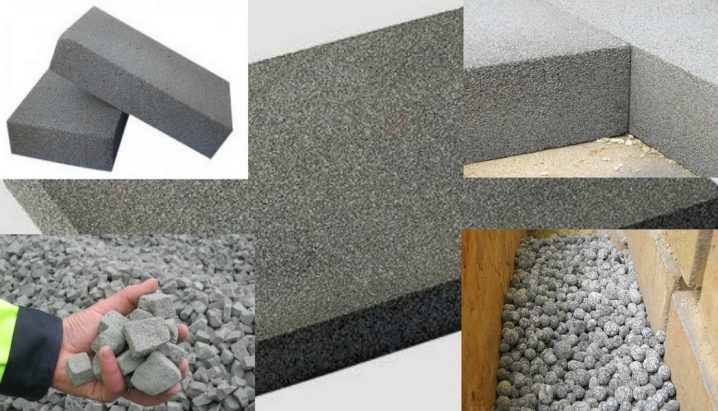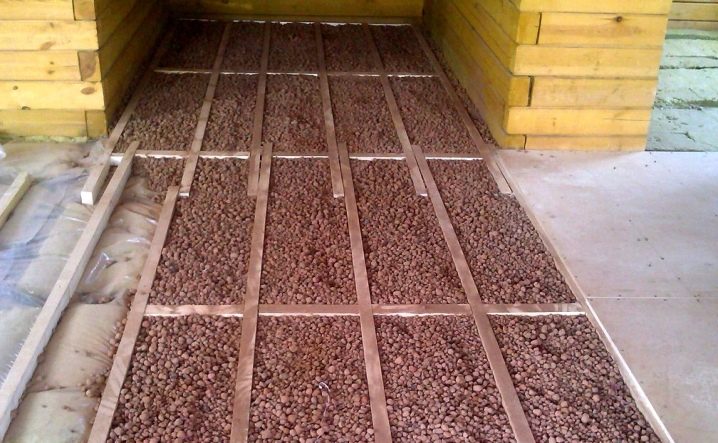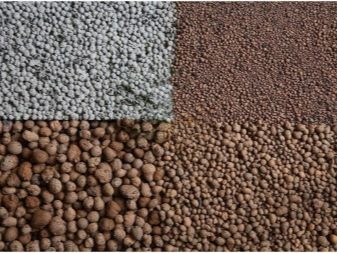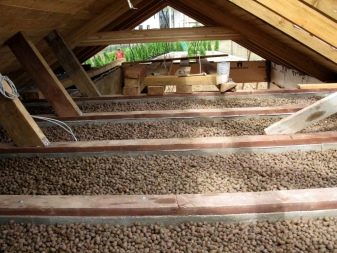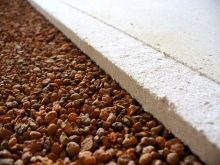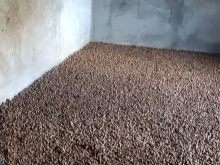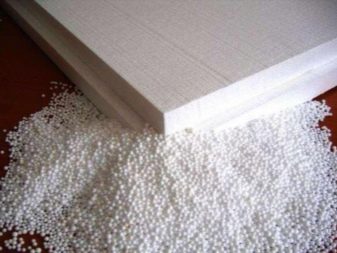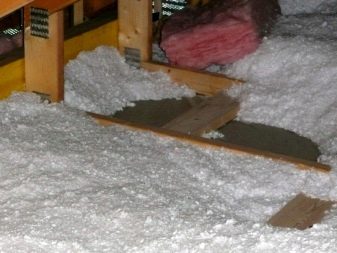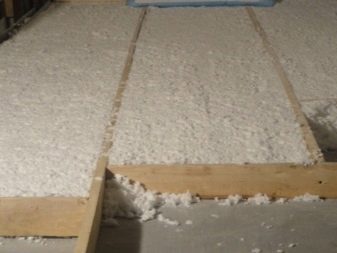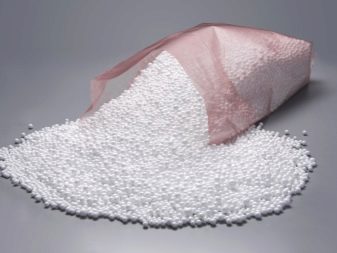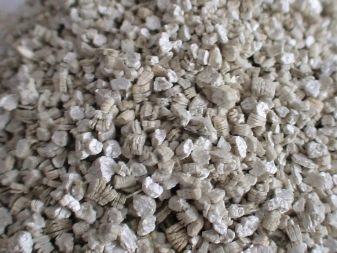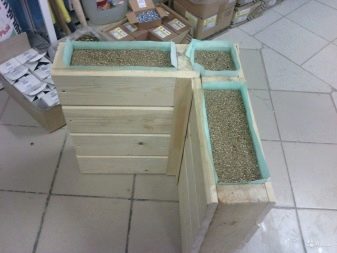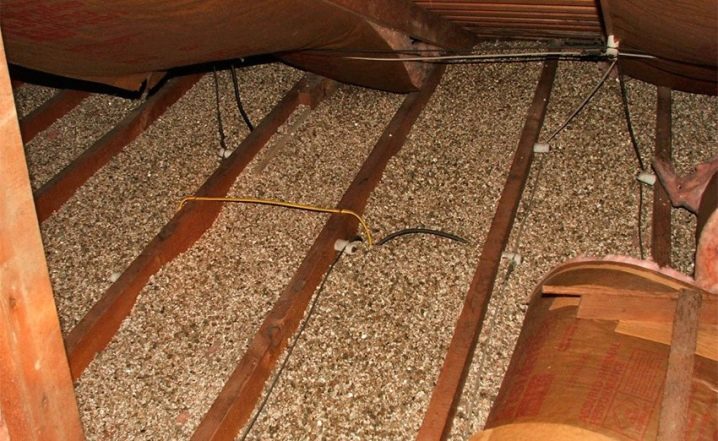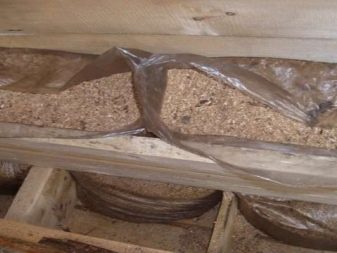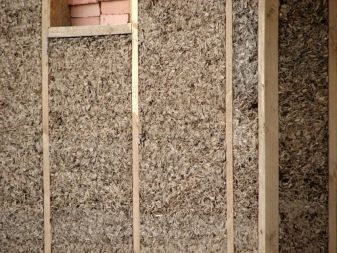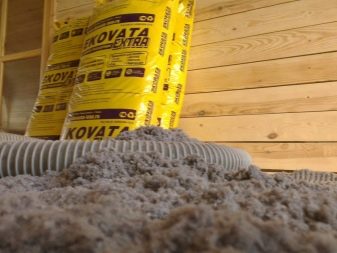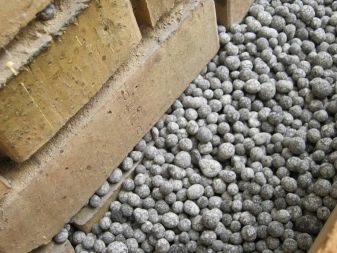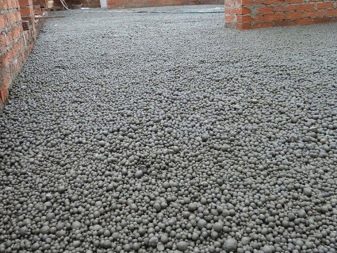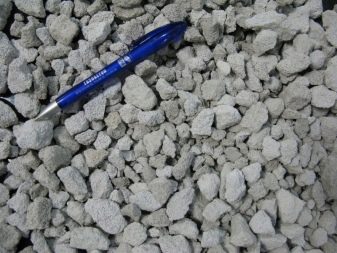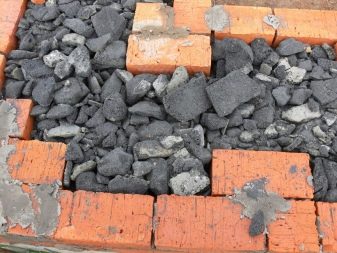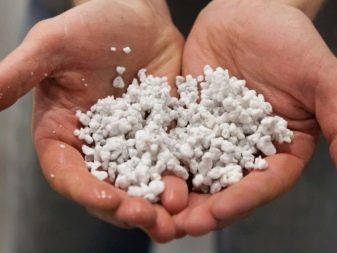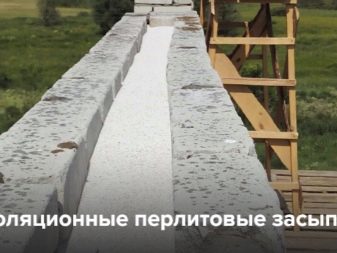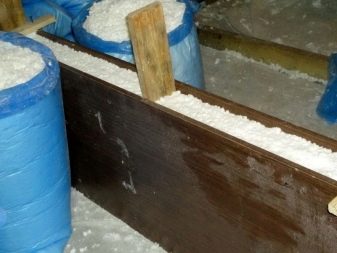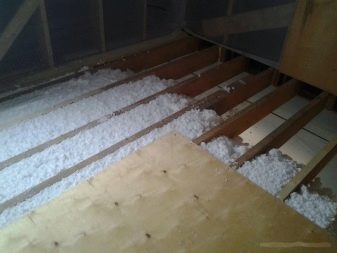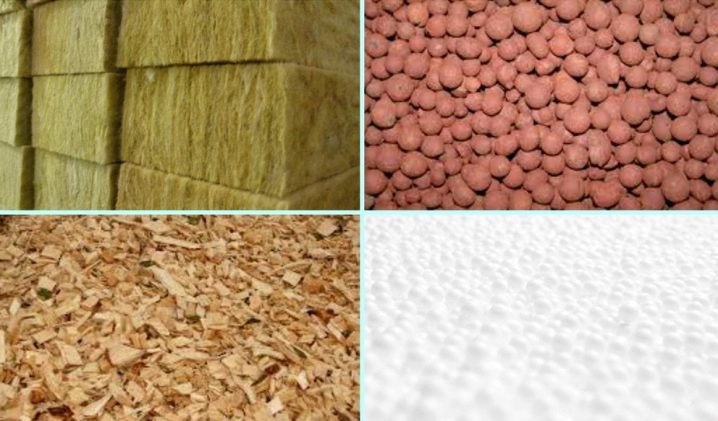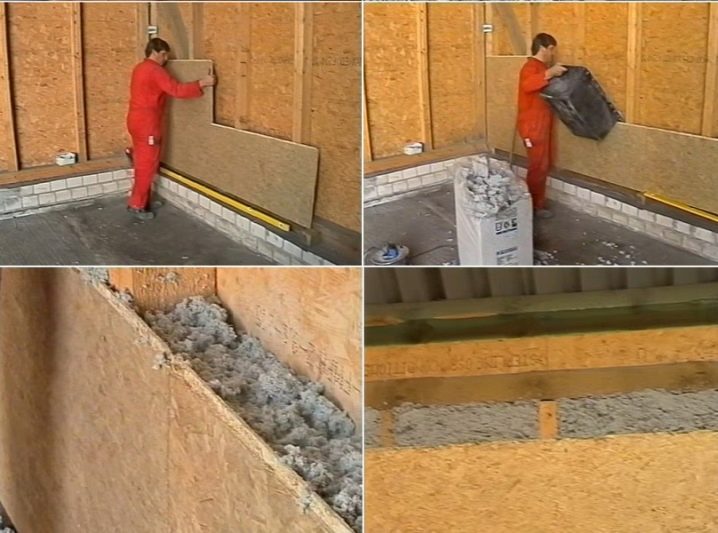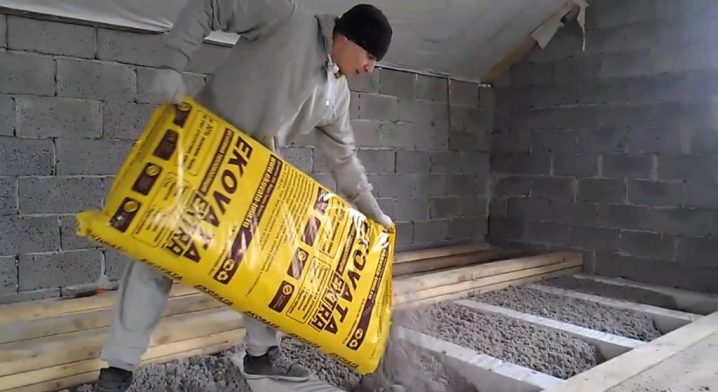Types of bulk insulation for walls and ceiling
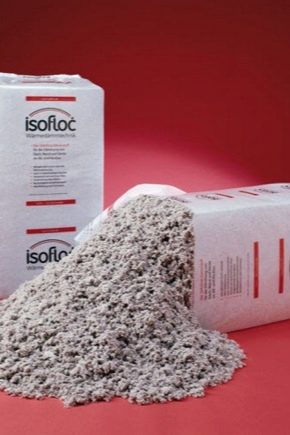
Currently, during the construction of buildings, internal and external energy-saving cladding is very often performed using bulk materials. The global market offers a huge selection of this option for insulation. In this article, you will find out what types of loose insulation for walls and ceiling, which types of insulating backfill are better to choose for the walls, and which for the floor and ceiling.
Types of loose insulation
Manufacturers of loose granular heat insulators presented a fairly large selection of material. Bulk insulation is made from paper, stone, resin, polymers and even clay. Let's see what the advantages and disadvantages of certain species, as well as describe the main technical characteristics.
To replace the insulation in the house was carried out correctly, you need to have some experience. Help with this and recommendations of experts. It is necessary to mix everything in the right proportions, choose a hygroscopic material, and foam chrome can also be used.
Expanded clay
It is likely that this is the oldest and well-known type of raw material. In modern construction, expanded clay can be called the “classics” of loose heat insulators. This species has a good advantage - light weight and porous structure. It is produced by roasting light alloy clay and is an environmentally safe raw material. Expanded clay does not burn and practically does not absorb moisture, does not enter into any chemical reactions, does not start a mold in it, do not live mice.
The main disadvantage is that with the possible absorption of moisture, the clay does not give it away - a wet insulation layer is very difficult to dry.
There are three types of this raw material:
- expanded clay sand (screening);
- expanded clay aggregate;
- expanded clay gravel.
It should be noted that this loose heat insulator is much cheaper than its competitors. It can be mixed with sawdust, while the layer of insulation should be slightly larger, since the wood has a lower heat transfer resistance.
Granulated polystyrene foam
We often hear this loose insulation under a different name - foam. If you look closely at a sheet of polystyrene foam, you can see that it consists of many balls. If they are properly loosened, then their density decreases, and the volume increases.
This type of heat insulator is used mainly when filling the voids in the already finished structures. The baby is simply blown out with the help of a special device, while it is very important to bring the process to the maximum compaction. The disadvantage of this raw material is that over time it can shrink.
Its use is possible for warming the floor, ceiling, sloping roofs. But the use of expanded polystyrene in this area is still debated:
- on the one hand, it is a light material, which is used for wall and roof insulation or is used as an additive to concrete (polystyrene concrete);
- on the other hand, they warn of its toxicity and flammability.
This material in the form of insulation began to be used relatively recently, and its properties have not yet been fully studied. Styrofoam does not absorb moisture, but it is afraid of very high air temperatures.
Vermiculite
Many do not even know what vermiculite is, despite its natural origin. The basis of this thermal insulation material is mica, which explains its layered structure. During the production of vermiculite, the addition of chemical additives and impurities is avoided, which allows its frequent use in warming loggias, balconies, and residential premises.
When this heat insulator falls asleep with a layer of 5 cm, the heat loss is reduced by 75%, and at a thickness of 10 cm the heat loss is guaranteed to drop by 92%. Service life is unlimited because there are no perishable impurities in it. Insulation does not burn and is non-toxic.
Even with a strong wetting of a separate area, this heater will evenly distribute moisture over the entire area, and then completely bring it out. Thanks to this "smart" property, all the consequences of wetting the insulator are minimized.It will not develop mold and pathogens, and the load on the foundation from structures with this type of insulation will be minimal.
And it can also be mixed with sawdust in a 50/50 ratio.
Sawdust
Sawdust is called the particles of recycled wood, obtained by sawing, externally they look like fine dust. These bulk insulation traditionally used for more than one century. And yet, because of its tendency to absorb moisture, sawdust will eventually rot. Many of them are mixed with other materials, such as clay or vermiculite. It is important to know that only small sawdust can be used as insulation, which is obtained by processing wood on modern machines with high revolutions.
Cellulose insulation - ecowool
This loose insulation is a mixture of ground newsprint (81%), antiseptics (12%) and flame retardants (7%). For the first time in the global construction market, this type of heat insulator began to be used about a hundred years ago, but in Russia it became known about a decade ago. Boric acid is the main antiseptic component, and borax as a flame retardant (flame retardant element). Thanks to these substances, ecowool fully justifies its name.The material is non-toxic and environmentally friendly.
Minus ecowool - rapid absorption of moisture, which leads to shrinkage of insulation, therefore, in regions with high humidity it is not recommended to use it. Cellulose insulation is ideal for the construction of complex structures, as the fibers of the material fill all the voids in the energy-saving finish.
Foam glass granules
Foam glass is made of broken glass, which is crushed into the smallest particles, melted down, and then mixed with coal. As a result, carbon dioxide is released from this alloy, which forms air bubbles in the structure of the foam glass. The manufacture of this heat insulator is quite expensive, as a result of which it is very rarely used in private construction. But it is often used in industrial facilities or in the construction of high-rise buildings.
This material is found in two fractions - in the form of granules and rubble. Its advantages are that it does not absorb water, does not burn, does not allow steam, it has high strength in compression and bending.
Most often, this loose insulation due to its light weight is used for the ceiling.Foamglass may be used for the manufacture of cement mortars, for example, when pouring screed or foundation, replacing ordinary gravel.
Aerated Babe
It is a mixture of porous rubble and sand, produced by crushing aerated concrete blocks and waste. Its fractions are always of different sizes (up to three centimeters) and often of irregular shapes, but this does not affect the quality of the insulation - the shape of the bed covered does not change.
It is used not only as a bulk insulation, but also as an additional bedding for insulation from sound in walls, ceilings. Perfectly supports optimum humidity and air exchange. Often this material is used instead of expanded clay in light concrete mixtures, for example, when pouring the foundation. In this case, this component additionally warms the foundation and protects it from expansion.
The cost of aerated concrete crumb is low, which does not prevent it from being used as an inexpensive drainage and insulation of road surfaces. The only drawback is the dusting of small pieces when backfilling.
Perlite
It is produced by melting volcanic ore (sour glass) at a temperature of 1000 degrees.When the ore is heated, the water in its structure evaporates and the material acquires a porous structure. The volume of raw materials sometimes increases to 90%. The finished granules do not absorb moisture, but pass steam. For better insulation with this raw material it is treated with bitumen, then the particles are glued together and turn into a single insulating layer of any shape.
The main characteristics of this loose insulation is that it does not burn, does not absorb moisture, permits steam, chemically inert. During insulation, the disadvantage is the inability to use the membranes, as they become clogged with perlite dust.
Granular Penoizol
In everyday life it is also called thermo wool or foam insulation crumb. The base of this heat insulator is hardened urea resin. The manufacturing process consists of crushing the polymerized material into fractions of 10-15 mm in size. Such granules retain elasticity. The benefit of such insulation is that when it is crushed, the volume of the crumb increases several times.
Penoizol is similar in appearance to snow flakes; at first glance it can be easily confused with expanded polystyrene, but it still differs from it.Its structure is smaller and rather soft, very light in weight - suitable for warming both walls and floors. It is not subject to burning and does not absorb moisture.
To properly fall asleep this heat insulator, you need to use the help of a special blow molding machine, since it will be much longer manually.
Features of raw materials
After reviewing the main types of bulk insulation, you can summarize - it is always secondary raw materials. It is produced by processing various wastes ranging from cellulose to minerals. Loose heat insulators in most cases are pure ecological raw materials. A common drawback of them is the need to perform a facing partition: the insulation is filled between it and the main floor, for example, a wall.
Installation
There are several basic rules for the installation of bulk materials. But for each type there are some nuances, therefore, experts recommend to follow the instructions with a complete technological description on the backfilling of this or that insulation.
Let's get acquainted with the general recommendations for the correct performance of work on energy-saving lining of bulk materials.
- Insulation of pitched roofs occurs outside after the installation of vapor barrier. For a good and uniform distribution of insulation along the slope, it is imperative to install transverse stops.
- When warming the floor and basement after backfilling of raw materials it is important to properly tamp it. This is done to avoid shrinkage of the insulation and subsequent deformation of the finish.
- When finishing rooms with high humidity, such as baths, saunas, a layer of backfill insulation will need additional, high-quality hydro and vapor insulation.
- Filling heat insulators are stacked in such a way as to avoid spilling them through the cracks and cracks of the finish.
Loose insulation may be used to fill any space in building structures. This type of insulation does not lead to a violation of the main decoration and its structure. Therefore, if it is impossible to insulate with traditional plates or rolls, bulk materials will be most welcome.
Due to the huge range of backfill insulating materials, the consumer is given the opportunity to make an independent decision in favor of choosing one or another raw material.
Review of perlite bulk insulation see in the next video.
